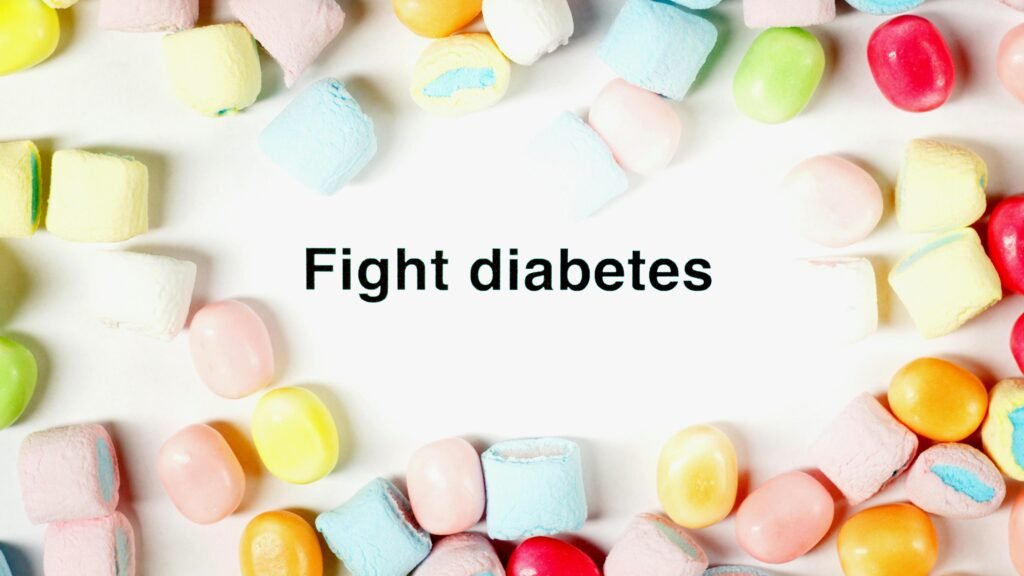Discover 10 powerful ways to naturally lower blood sugar levels. From healthy eating to hydration and exercise, these strategies empower better health management.
What is Blood Sugar?
Simply put, blood sugar refers to the concentration of glucose present in the bloodstream. Glucose, a type of sugar derived from our foods, serves as the body’s main energy source. When we consume carbohydrates, such as bread, pasta, fruits, and vegetables, our digestive system breaks them down into glucose, entering the bloodstream.
10 Warning Signs of Blood Sugar Imbalance You Shouldn’t Ignore!
- Fatigue
- Increased Thirst
- Frequent Urination
- Blurred Vision
- Slow Healing
- Increased Hunger
- Headaches
- Difficulty Concentrating
- Numbness or Tingling
- Mood Swings
Causes of High Blood Sugar
- Being sick
- Stress
- Overeating foods with sugar or carbs
- Being less active than normal
- Missing doses of insulin
- Your diabetes medicine isn’t working well
- Taking steroids or other medicines
- Recovering from surgery

10 ways to lower blood sugar
- Eating Well:
Fill up your plate with a mix of good stuff like fruits, veggies, lean proteins, and whole grains. These foods help keep your blood sugar levels steady. Steer clear of processed foods, sugary snacks, and drinks to avoid those blood sugar spikes.
2. Watch Those Carbs:
Be mindful of the carbs you eat—they can really affect your blood sugar. Choose complex carbs like whole grains, beans, and veggies, as they’re digested slower and won’t cause sudden sugar spikes.
3. Stay Hydrated:
Drink up! Water helps flush out extra sugar in your blood through pee. Aim for at least 8 glasses a day to keep hydrated and keep your blood sugar levels in check.
4. Get Moving:
Regular exercise is a must for managing blood sugar. Take a walk, go for a bike ride, or swim a few laps to help your body use glucose better and keep those blood sugar levels down.
5. Catch Your Z’s:
Don’t skimp on sleep! Not getting enough shut-eye messes with your hormones and can make your blood sugar levels go haywire. Shoot for 7-9 hours of quality sleep each night for better blood sugar control.
6. Chill Out:
Stress can really mess with your blood sugar. Try relaxing techniques like meditation, deep breathing, or yoga to keep stress levels low and your blood sugar levels stable.
7. Load Up on Fiber:
Fiber-rich foods like fruits, veggies, beans, and whole grains slow down sugar absorption and help control blood sugar. Make sure to include plenty of fiber in your meals for better blood sugar management.
8. Mind Your Portions:
Keep an eye on how much you’re eating to avoid overdoing it. Using smaller plates, measuring servings, and eating slowly can help you avoid blood sugar spikes and keep things steady.
9. Easy on the Booze:
Alcohol can mess with your blood sugar levels, especially if you drink on an empty stomach or have too much. Stick to lighter options like wine or spirits mixed with low-calorie mixers and watch your intake.
10. Talk to a Pro:
If you’re having trouble lowering your blood sugar despite making changes, don’t hesitate to reach out to a healthcare professional. They can offer personalized advice, prescribe medication if needed, and help you stay on track for better blood sugar control.
Basic method of checking blood sugar level
- Supplies: self-glucose meter, phlebotomy device, lancet, test strips (strips), blood sugar management notebook one
- Measurement time: Basically, measurement is often required 2 to 4 times a day, depending on the situation, such as on an empty stomach in the morning, 2 hours after a meal, before going to bed, or when there are symptoms of hypoglycemia.

Mastering Blood Sugar Measurement: Precautions for Every Step
- Check the test strip: Check the expiration date of the test strip and whether the code number matches that of the device.
- Please wash your hands: Wash your hands thoroughly with soap and dry them completely.
- Finger Massage: Gently massage from palm to fingers to ensure sufficient blood circulation.
- Blood clot: Prick the tip of your finger with a blood clot needle to obtain a sufficient amount of blood. The side of the finger is less painful than the middle part.
- Blood sugar measurement: Apply blood to a test strip and measure blood sugar levels with a self-monitoring blood glucose meter.
What is normal sugar level by age?
| Age | Fasting blood sugar level | After meals blood sugar level |
|---|---|---|
| 18 – 50 | 70 – 99 mg/dL | 70 – 140 mg/dL |
| 51 – 60 | 70 – 105 mg/dL | 70 – 150 mg/dL |
| 61 – 90 | 70 – 115 mg/dL | 70- 160 mg/dL |
Read More News
Click here for the latest news of all over the world – Insightsyncs, your source of news.





